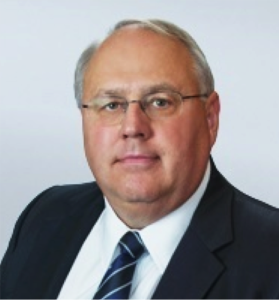I recently wrote a piece called “The sycamores are cut down, but we will change them into cedars’: Most recent shemitah year ended Sept. 13,” which I posted Sept. 28 (https://soundingsjohnbarker.wordpress.com/2015/09/28/the-sycamores-are-cut-down-but-we-will-change-them-into-cedars-most-recent-shemitah-year-ended-sept-13/). Shortly before I had written about blood moons.
A shemitah year, also spelled as shmita, has ancient roots dating back 3,000 years and is grounded in the seventh year of the seven-year agricultural cycle mandated by the Torah for the Land of Israel and still observed in contemporary Judaism. During a shemitah year, the land is left to lie fallow.
While shemitahs and blood moons are not common terrain for most Catholic writers to venture into, they certainly have a biblically sound scriptural basis, particularly in the Old Testament books of Leviticus, Deuteronomy, and in the case of blood moons, Joel.
I tend to work across denominational lines and I find my patience tried by those of any denomination, Catholic or Protestant, or any religion, Christian or non-Christian, or for that matter the religious and non-religious, who are demonstrably uncharitable towards their fellow man. I’m happy enough to spend time with people of any faith or no faith, for that matter, if they demonstrate kindness and goodwill.
After publishing “The sycamores are cut down, but we will change them into cedars’: Most recent shemitah year ended Sept. 13,” one of my Protestant evangelical acquaintances introduced me to John Haller, an Ohio lawyer and evangelical, who has an undergraduate degree from Grace College & Theological Seminary in Winona Lake, Indiana, and Master of Science (MSc.) and Doctor of Law (JD) graduate degrees from Indiana University in Indianapolis, and who is currently a partner at Shumaker Loop & Kendrick LLP in Columbus, Ohio, with a commercial law practice specializing in the areas of litigation matters involving restrictive covenant and theft of trade secrets, breach of contract claims, securities, finance, lender liability, professional liability and product liability. He’s also listed as a “leader” at Fellowship Bible Chapel, founded in June 2013 in Lewis Center, Ohio, about 20 miles north of Columbus.
“Along same lines as shemitah … John Haller does a weekly prophecy update,” my evangelical acquaintance wrote. I promised to take a look at the YouTube video when I got a chance, observing, “This may not be one that would have been on my normal Catholic viewing list otherwise.”
Sadly what I discovered was not so much a prophetic word, in my view, but rather a diatribe against Pope Francis and the Roman Catholic Church, trotting out the usual canards, criticizing the Catholic Church based on such differences as the preference of some (not all) Protestants for the “empty cross” versus the body of the crucified Christ depicted on the cross on Catholic crucifixes, as they argue we should not dwell on Christ’s death but his resurrection, and that an empty cross is a symbol of his resurrection. And so on. I think I understand Haller’s empty cross argument – and in terms of symbolism I don’t have any problem with the point it makes. But I think he shows a fundamental misunderstanding of both the mass and Catholicism if he thinks Catholics don’t believe the cross is sufficient. Yes, we liturgically focus on the crucifixion on Good Friday. And then two days later, we celebrate Jesus Christ’s resurrection from the dead on Easter Sunday, the most important day of the year, as the very raison d’etre of all Christian claims, in the Catholic liturgical year – surpassing even Christmas – and we’re folks, remember, who like our midnight mass liturgy.
Viewing Haller’s “2015 09 27 John Haller Prophecy Update “Check the Box? / False Religion Palooza!,” the link I was sent on YouTube (https://www.youtube.com/watch?v=licpV7kXjIU) just reminds me how far we have to go in building bridges between peoples of different Christian faith communities, different faiths, and no faith at all. If you have any need to check that out for yourself, to see what I am talking about when it comes to Haller, Catholicism and Pope Francis, just go the 45-minute mark and keep on watching. Offensive would be something of an understatement.
C.S. Lewis, the former atheist-turned-Christian apologist, was an Anglican, but one who was distinctly untaken with Christian denominationalism and focused on the essentials of the faith in his writing, not preferential practices.
In an article commemorating the 100th anniversary of Lewis’s birth, evangelical writer J.I. Packer called him “our patron saint.” Christianity Today on Sept. 7, 1998 said Lewis “has come to be the Aquinas, the Augustine, and the Aesop of contemporary Evangelicalism”) and added on April 23, 2001 that Lewis was “the 20th century’s greatest Christian apologist.” While I myself might have exhibited just a tad bit of admittedly denominational bias and opted for the Roman Catholic convert from Anglicanism, G.K. Chesterton, for that honour, Lewis is certainly not an unreasonable claim for being the last century’s most important Christian apologist.
In the pre-publication editing process for the manuscript of what many scholars consider his most important apologetics work, Mere Christianity, published in 1952, Lewis said he tried to guard against putting forth too much his own Anglican beliefs “by sending the original script of what is now Book II to four clergymen (Anglican, Methodist, Presbyterian, Roman Catholic) and asking for their criticism. The Methodist thought I had not said enough about Faith, and the Roman Catholic thought I had gone rather too far about the comparative unimportance of theories in explanation of the Atonement. Otherwise all five of us were agreed.”
Quite so.
You can also follow me on Twitter at: https://twitter.com/jwbarker22







